New designs: The world’s smallest retractable roof
source: StadiumDB.com; author: michał
 Well, not the roof itself, but the world’s smallest stadium to have a sliding roof may soon be built in Japan. It’s the first Asian country to shift so much from athletic stadiums to football-specific.
Well, not the roof itself, but the world’s smallest stadium to have a sliding roof may soon be built in Japan. It’s the first Asian country to shift so much from athletic stadiums to football-specific.
Advertisement
While in Europe we’re seeing a clear U-turn from stadiums with a running track to football-specific ones, in Asia it’s almost the other way round. Still more multi-discipline stadia are being built, of course primarily in China. Now Japan is giving a clearer signal that things are changing.
Since early years after the 2002 World Cup we’ve seen a change in policy. The goal is to build stadia that can draw crowds on a regular basis, for which football is the best answer. Now the trend is getting stronger, also thanks to announced efforts by the government. In upcoming 20 years public-private partnership could result in delivery of over 20 new stadia (several baseball-specific) and the Japanese Development Bank estimates these projects could be worth up to ¥ 2 trillion.
Toyama “Machinaka” Stadium (15,000), Toyama
The Japanese city of Toyama may go in history as one to have the world’s smallest stadium equipped with a retractable roof. Construction of such structure would come at a high price, because the sliding roof itself is expected to cost ¥4 billion ($38m).
This, depending on estimate for the whole stadium, represents a fourth or even third of the entire project. And if not for other reasons, it might be why this feature could be dropped from the scheme if the budget isn’t secured. Total budget for the project is expected to be within ¥12.5 and 15.5 billion ($120-150m).

The retractable dome would consist of three parts. When resting, each of the three segments would rest on top of one another above the north end. If needed, they would slide southwards, where the roof will be translucent to enable natural grass growth.
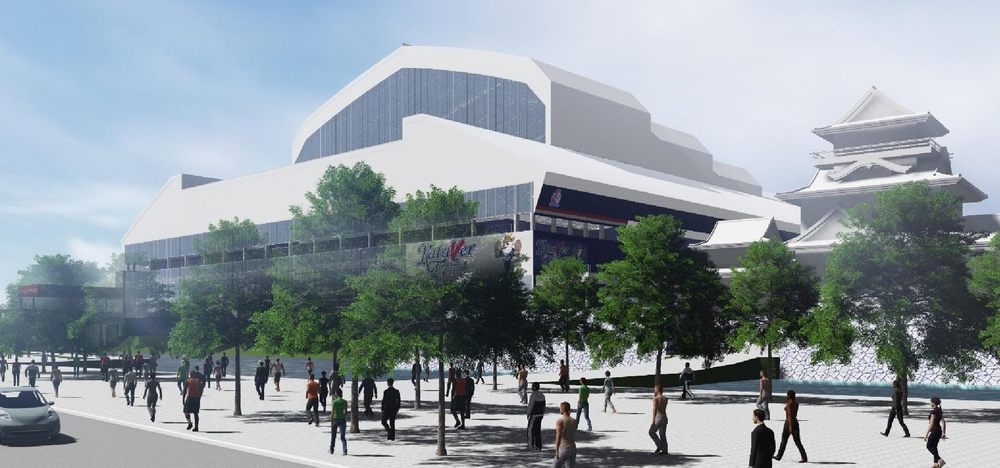
Accommodating 15,000 people underneath the roof, this building will be able to host J1 League games (15,000 is the minimum). With a footprint of 25,500 m2 the stadium will offer 5 floors of facilities behind the stands, including one directly below the field (!). Aside from typical football amenities (including a conference hall, offices, private rooms or a restaurant), the stadium will also become a disaster prevention base.
The stadium’s location is a major factor as well. It’s planned to be built almost at the heart of Toyama, in a much more accessible place than the current Toyama ARP Stadium. The down side is complete lack of space for parking, which means almost entire dependence on public transport. Thankfully, the network in central Toyama is very good.
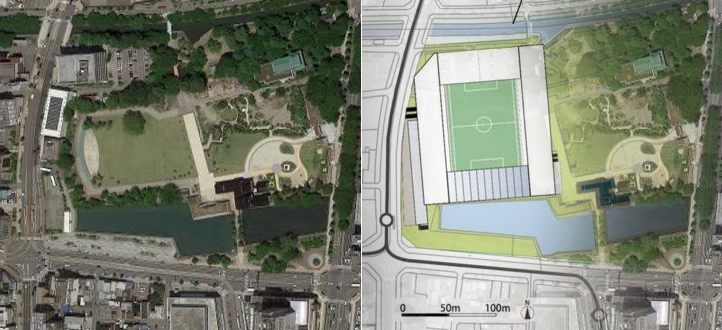
Kyoto Kameoka Stadium (20,000 - 25,000), Kameoka
Plans of a new, representative stadium for Japan’s former capital date back to before the 2002 World Cup, but haven’t been implemented as of yet. The latest one, though contemplated for a solid couple years now, envisions construction not only outside Kyoto itself, but even outside of Kameoka (just west of Kyoto).
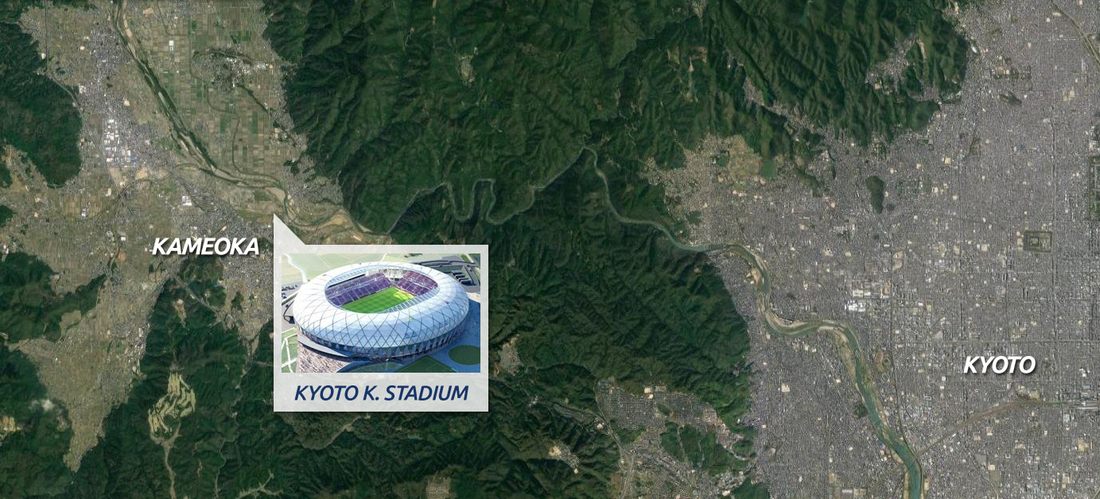
Why the location? Because the proposed site is within a short walk (250 m) from a capacity railway station and land value is low enough to make the project feasible. Stands for 20,000 – 25,000 people would be built on 12.8 hectares of partly wet land.
Contrary to previous stadium design trends in Japan, this venue would be football-specific, with fans placed as close to the field as 8 meters (11 behind goals).
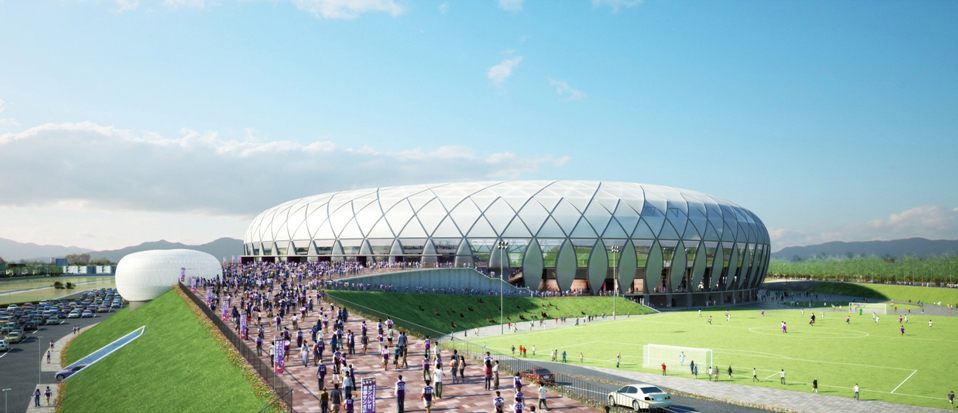
Despite years of preparations it’s still unclear whether the stadium will come to fruition. Future home of Sanga FC (currently J2 League) is dependent on full acquisition of land (almost complete now) and winning against a vocal opposition to building a stadium on the site.
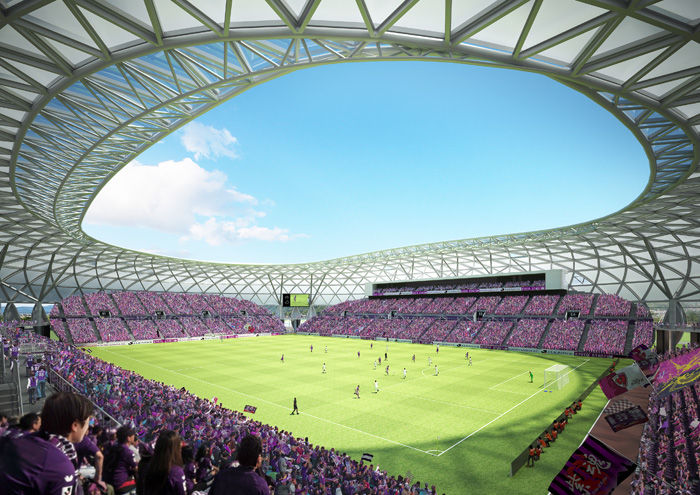
Advertisement
 StadiumDB
StadiumDB